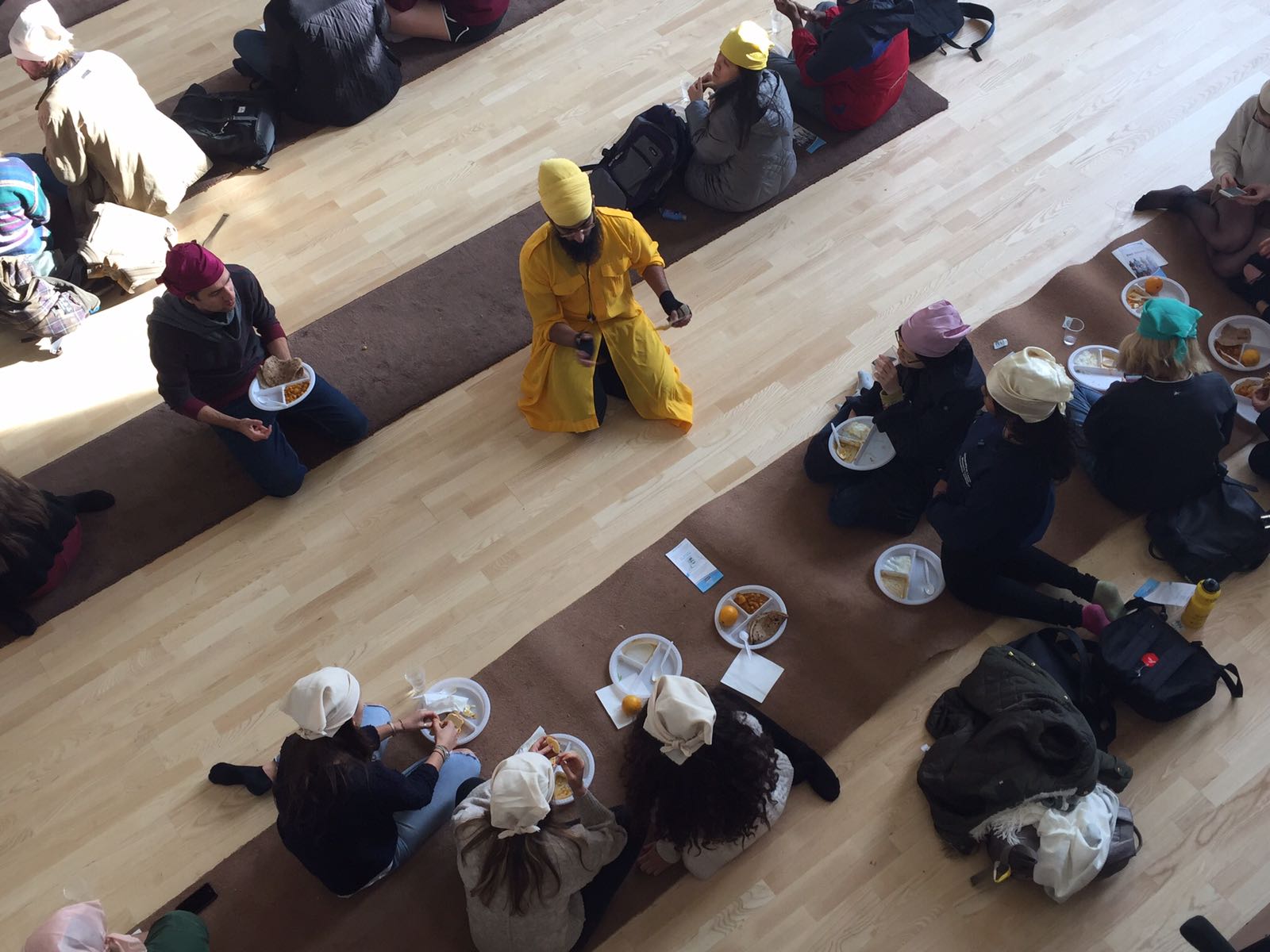Integration is possible if we are willing to talk, share and celebrate each other’s festive moments, be it cultural, social or religious. The University of Leeds Sikh Society recently organised an incredible event, ‘Langar on campus’, which made this possible.
Hundreds of British and international students in colorful headscarves gathered at the Riley Smith Hall to taste cholay, roti, and raita – the traditional foods of the region of Punjab, in northern India. A shared sense of appetite brought everybody together, regardless of religion or ethnicity, onto the Dastarkhwan, or tablecloth.
The New York Times correspondent Lynsey Addarion did Langar a particularly positive service when she summarised it captivatingly as “the community kitchen, where everyone, no matter their religion, wealth, or social status, is considered equal”. This definitely came through last week at the Riley Smith Hall: an adult-sized poster at the entrance pictured people from a wide variety of faiths, and two figures stood out: a Muslim man wearing Fez, a piece of attire which distinctly defines a man as noble and honourable; and Mata Khivi, the wife of the second Sikh Guru Angad Dev, distributing Langar among the people.
The most significant feature of the image was the attire of the figures: it seems that modesty is the hallmark of all religions. Women and men across the image covered their bodies and heads with scarves and hats, varying in form depending on their religion.
Sadly, in contemporary society this piece of clothing has now become a source of conflict, since Muslim women have been demanded to remove their headscarves in some western countries. This trend is particularly rife in Europe, more specifically France and Holland, where legal bills have been passed which outlaw religious dress that are thought to “oppress women”. Although this remains a great matter of concern between western journalists, scholars, and critics, it appears to be less common in Britain, and at the Riley Smith Hall last week the headscarf was certainly actively cherished.
Sophie Kirby, a Politics and Sociology student, said that “Langar taught me the true essence of community, and how essential it is to immerse yourself in different cultures so that we can coexist in harmony, teaching each other vital lessons of faith and community, regardless of religion.” It seems that in light of the times in which we’re living, Langar exemplifies exactly what we need: harmony, unity and empathy for each other. Divisiveness and religious oppression is certainly not the way to go, something that has been proved over and over, but which seems to slip some people’s mind.
Irfan Raja
(Images: courtesy of Kiran Kaur, Sikh Society, Leeds Beckett)

